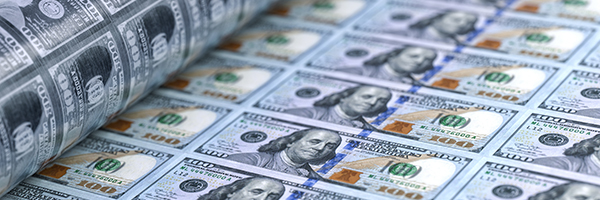Yields on U.S. Treasuries hit 1.61% early today before pulling back slightly to 1.51% as of 3 p.m. New York time.
It’s not just the rise in yields or even the magnitude of the increase that has so disconcerted the bond market today, February 25. It’s the speed of the move. As of 3 p.m., the bond market was looking at a 14 basis point increase in yields just today. That’s a huge move for the normally slow-moving bond market. (It makes 100 basis points to make up one percentage point.) In the last month, the yield on the 10-year Treasury has climbed 40 basis points.
The rout–and I think that’s the appropriate word for today’s action–began with the failure of the Treasury’s action of 7-year notes today. With demand cratering at the auction, the yield on the 5-year note roared above 0.75%. That was enough to send traders looking for ways to hedge (or profit from) the message in soaring 7-year yields that the Federal Reserve will start to lift interest rates soon.
You might say that the auction results and the conclusions that traders drew from them about the timing of a Federal Reserve move to raise rates trumped the promises from Fed chair Jerome Powell in Congressional testimony on Tuesday and Wednesday that the Fed was not even thinking about higher rates because growth in the economy was still so uncertain and there was so much ground to make up in the economy and the labor market after the coronavirus recession.
The move today in the 7-year and 10-year notes is leading to a repositioning of bond portfolios at money managers on and off Wall Street. Expectations now are that the yield curve is going to get much steeper and that expectation is rippling across the market in major moves.
For example, we’re seeing selling of long-maturity Treasuries (and Treasury derivatives) by holders in the $7 billion market for mortgage-backed securities as these investors try to deal with an unexpected rise in the duration of their mortgage portfolios. (As yields on the 10-year Treasury rise, fewer mortgage holders refinance and that increases the duration of mortgage-backed portfolios. And one thing you don’t want if the yield curve is getting steeper is to see the duration of your portfolio climb because that means falling prices on long-duration assets and bigger losses.)
Bonds with negative yields–a big proportion of the world’s bond supply now–are also extremely exposed to duration risk. (Since they don’t pay any interest and a lot of these purchases were made to match bond assets with long-maturity obligations.) So the very structure of the global bond market is accelerating the bond market chaos. Bloomberg calculates that the market value of bonds with negative yields has dropped by $4 trillion this week.
Some part of this move is an overreaction–a clear case of the financial markets scaring themselves into a near panic. But no one knows exactly how much of an overreaction the selling is. And the low risk move in a situation like this is to sell and sort our bonds and sort it all after afterwards.
I could make an argument that the bond rout hasn’t changed the relatively good news about the post-vaccine economic recovery. But I’m not sure that being on the right side of history on that argument has much to do with stock prices right now.
As of 3:30 p.m. today in New York, the Standard & Poor’s 500 is down 2.46% and the Dow Jones Industrial Average is off 1.78%. The NASDAQ Composite is lower by 3.42% and the NASDAQ 100 has tumbled 3.46%. The small cap Russell 2000 has lost 2.98%. The iShares MSCI Emerging Markets ETF is 2.29%.


